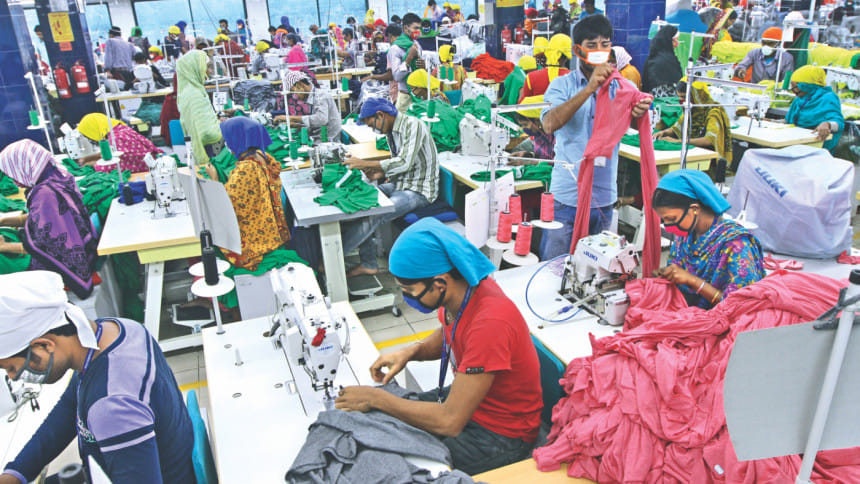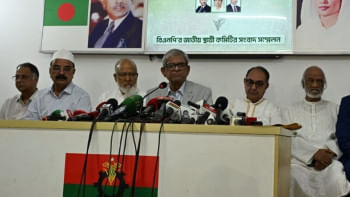BGMEA should create captive insurance for apparel makers

Insurance premiums for readymade garments (RMG) and textile industries are on the rise. In addition, changes have also recently been made in the marine cargo insurance procurement process. These are bound to have an effect on the overall competitive pricing of the exported product from Bangladesh. BGMEA may consider alternative modes of risk transfer to reduce, or at least maintain, the cost of insurance.
There is no denying that the insurable loss from RMG and textiles has significantly and detrimentally affected the reinsurance rates for the entire Bangladesh market.
Until 2000, the insurance loss from RMG and textiles was approximately 1,600 percent. The losses were so frequent that major international reinsurers refused to participate in the Bangladesh reinsurance programmes unless measures were taken to curb the exposures.
Since then, several restrictive remedial terms and conditions have been put in place. While back in 2000, the size of the individual factories was significantly smaller (less than Tk 50 crores or $5 million), hence the losses were also relatively monetarily small (but frequent).
RMG and textiles mills in Bangladesh today are significantly larger in size, capacity, and investment (more than Tk 400 crores, or $50 million). As a result, when there is a loss, they tend to have an impact on the overall market. Losses such as the Standard Group fire loss is a good example, where the claims reached an unprecedented Tk 300+ crores.
To tackle the costs of rising insurance premiums, and its effect on the market, few of the first captive insurance companies had been formed more than 100 years ago.
Captive insurance companies are group or association owned insurance companies created to respond to their unique insurance needs. Certain industries (such as nuclear and tobacco liability) become unattractive or uninsurable by the mainstream or traditional insurance markets.
Extreme examples of such incidences are the nuclear insurance pool which helps insure the nuclear industries, and the tobacco insurance cooperative (TIC) which helps insure property and casualty exposures from the tobacco industry.
As a matter of fact, one of the first captive insurance companies was formed when a group of textile manufacturers in New England, USA were looking for a way to help mitigate rising fire insurance rates back in the late 1800’s.
Captive insurance growth surged as the premium rates hardened in the mid-1900’s, leading to increased costs to the businesses.
Recently, the Insurance Development and Regulatory Authority (IDRA) revised the rates for RMG and textile risks. While the premium rates have been slightly adjusted (increased) -- most actuaries and underwriters would argue that the rate remains extremely competitive.
In 2016, I surveyed a set of the best RMG factories in Bangladesh in order to seek rates and terms from the Lloyd’s market. While the rates offered by the local insurer was 0.09 percent, we were unable to find any support from any good international security at less than 0.16 percent, even though I have argued that these factories were far better in safety and risk management than most RMG factories in the world, thanks to the efforts of Accord and Alliance.
So, what is a captive and how can it help BGMEA?
A captive is an insurance or reinsurance company established specifically to insure or reinsure the risks of its owners, or parent company. Captives can be formed by a business or group of businesses with the primary purpose of allowing the operating business to take control of its risk management by transferring the risk to an insurance company (Captive) controlled by the business.
Risks inherent to the RMG or textile industry may not be available or affordable, but could be effectively self-insured through a captive. Captives allow a company or members to not only have better coverage, but it rewards the owners for the years when claims are low.
There are now over 6,500 captive insurers worldwide. Over 90 percent of Fortune 500 companies employ some type of captive insurance company arrangement. While regulation currently does not permit captive insurers in India, there are more than 70 captives operating in Singapore.
Captives offer significantly more efficiency, flexibility and control than a typical insurance programme. The advantages of captives are in multitude and can be significant, such as potential short and long-term cost savings; customised property and employee benefit insurance schemes; and captives can become a profit centre, instead of an annual drain on member company’s resources.
The BGMEA Captive Insurance could be the first captive insurance company by the RMG industry in the world.
The first captive insurance company in Bangladesh would be leading the way of progress and relief to the traditional insurance and reinsurance markets which could be emulated by other industries such as power, leather and jute.
With BGMEA’s captive, its members can enjoy favourable rates, terms and conditions which may otherwise be too restrictive in the traditional insurance market. This would help RMG and textile mills to remain competitive in their prices.
Moreover, the captive would bring relief to the insurers who are struggling to find reinsurance support for the members of BGMEA. By extension, the BGMEA Captive could also help with the insurance and reinsurance needs to BKMEA, BTMA, and related industries.
Amendments to the existing licensing of insurance companies may be required. However, with the help of IDRA, Sadharan Bima Corporation and the government authorities, the establishment of the first captive insurance can and should be facilitated.
The writer is the CEO of Integrated Risk Consulting Group. He can be reached at [email protected]

 For all latest news, follow The Daily Star's Google News channel.
For all latest news, follow The Daily Star's Google News channel. 



Comments